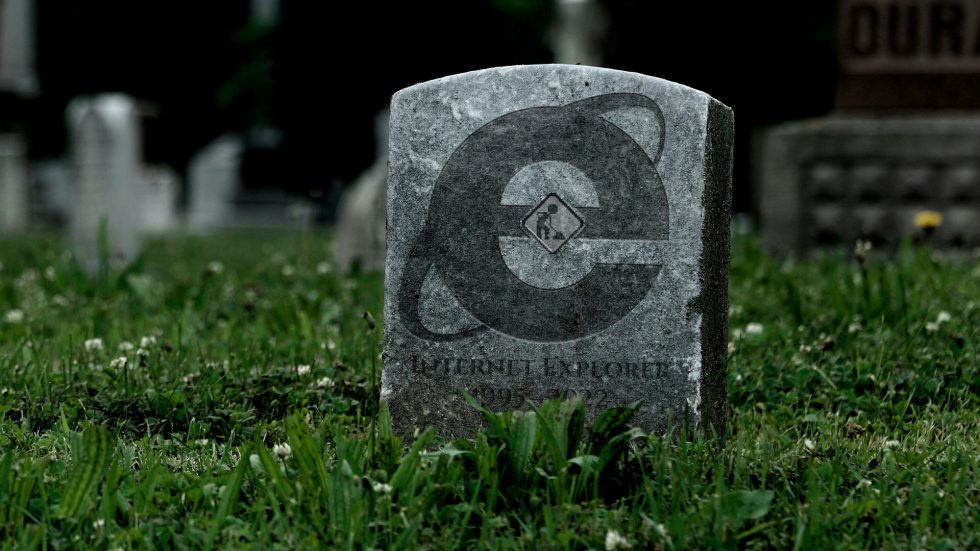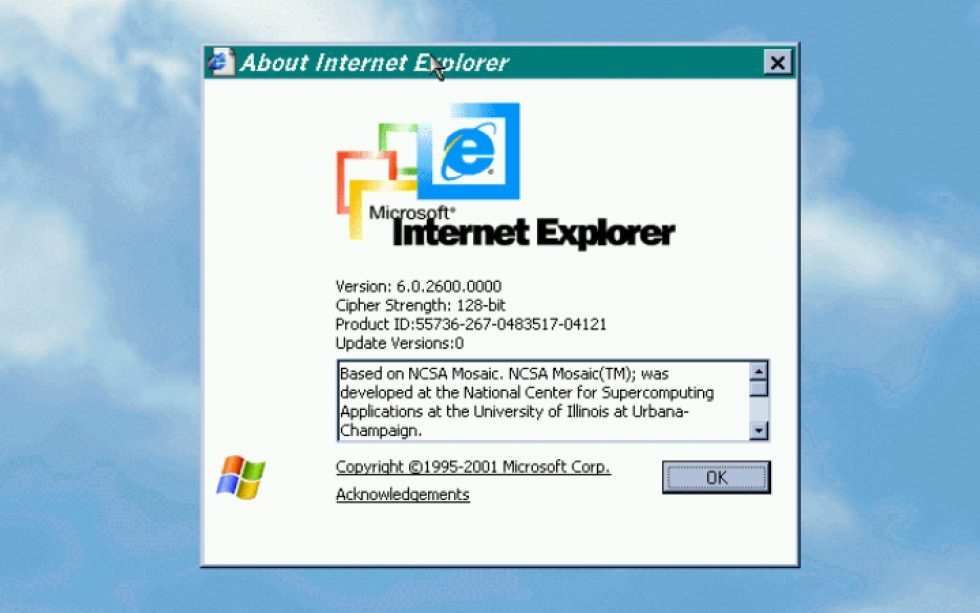
reader comments
256Microsoft's Internet Explorer has died many deaths over the years, but today is the one that counts. The final version of the browser, Internet Explorer 11, will no longer receive support or security updates starting today, and it will gradually be removed from Windows 10 PCs via a Windows Update at some point in the future. It was never installed on Windows 11 PCs at all.
Microsoft says that people who open Internet Explorer "over the next few months" will "progressively" be redirected toward Microsoft Edge instead, which will offer to import all bookmarks and saved passwords to ease the transition. For users and businesses who need Internet Explorer to access individual websites, Microsoft will continue to support IE mode in Microsoft Edge until "at least 2029." IE mode combines the user interface of Edge with IE11's old Trident rendering engine, allowing older websites that don't render correctly in newer browsers to continue to work.
That's the end of the line for Internet Explorer, a browser that annihilated all competitors in the late-'90s browser wars only to be decisively wiped out in the early-2010s browser wars. For those who weren't there, we've put together a brief history of the life and times of Internet Explorer. IE's heyday is a distant memory, but the entire story is worth knowing. Google Chrome is on top of the world today, but that didn't happen overnight, and the browser wars have been nothing if not cyclical.
From Mosaic fork to world-devourer

Internet Explorer’s story begins with NCSA Mosaic, one of the earliest graphical web browsers. It was preceded by a handful of projects— Tim Berners-Lee’s Nexus project is generally acknowledged as the first browser, and Cello preceded Mosaic on Windows PCs—but Mosaic popularized browsers as we know them, with a recognizably modern user interface and support for inline images. The ability to combine images and text on the same page may sound like the absolute bare minimum for a browser now, but in the early '90s, it was revolutionary.
AdvertisementMosaic inspired competitors. Some, like Netscape Navigator, were their own distinct projects, though many of the people who created Netscape had worked on Mosaic first. Others were direct offshoots of Mosaic and used its trademarks and source code. One of these offshoots was Internet Explorer.
Microsoft licensed a version of Mosaic from Spyglass, Inc., which itself had licensed the original version of Mosaic with the intent of unifying its disparate codebases and making the browser support the same features on all supported platforms. Microsoft was just one of the companies that licensed the Spyglass version of Mosaic; the company hoped to jump into the browser market quickly by putting its name on an existing browser rather than building one from scratch.
The first few versions of IE weren’t especially noteworthy, and they mainly played catch-up with Netscape while adding support for more platforms (by the time version 3.0 rolled around in mid-1996, IE ran on Windows 95, NT, and 3.1, as well as 68K and PowerPC Macs). But Windows 95 was taking over the computing world at the time, and Microsoft used its increasing dominance of the PC platform to push its other products, IE first among them.
Microsoft’s bundling of Internet Explorer with Windows—and, by the time Windows 98 and Internet Explorer 4 rolled around, the browser’s ever-deeper integration into the rest of the operating system—was a double-edged sword. On the one hand, IE’s market share shot upward dramatically in 1996 and 1997, taking a huge bite out of Netscape’s share simply by virtue of being available by default on most Windows 95-era PCs. On the other, it drew intense legal scrutiny, starting with an $8 million settlement with Spyglass (Microsoft had agreed to pay Spyglass royalties based on IE sales and had then bundled it for free with Windows, technically generating zero revenue) and continuing with a landmark antitrust case brought by the US government.
If you didn’t live through the era, it’s hard to imagine the extent to which Windows was computing in the late '90s. The Mac existed and was still beloved by the proverbial “ crazy ones,” but it was at its nadir in terms of market reach and cultural relevance. Early Windows competitors like OS/2 and BeOS had been mostly vanquished. We were years from Linux distributions that even pretended at user-friendliness. Palm Pilots, Apple Newtons, and Pocket PCs were weirdo niche gadgets used by Business Dads, the guys who learn valuable lessons about putting their family ahead of their work in '90s movies.
reader comments
256